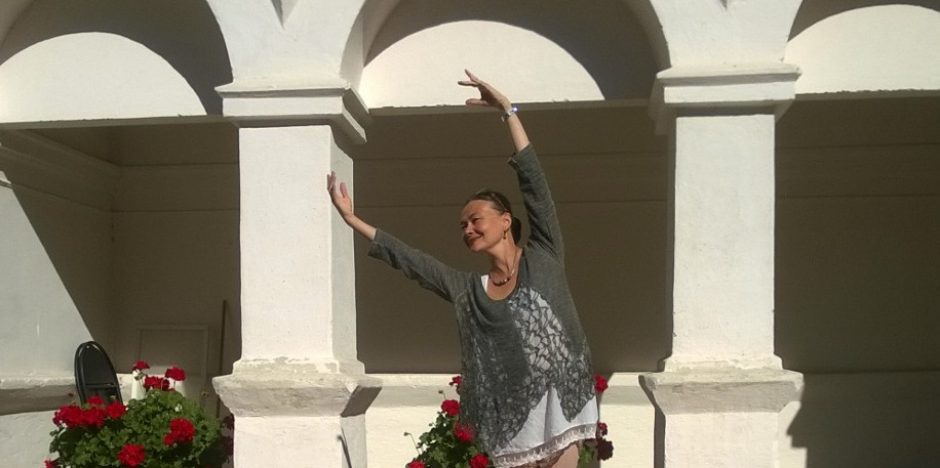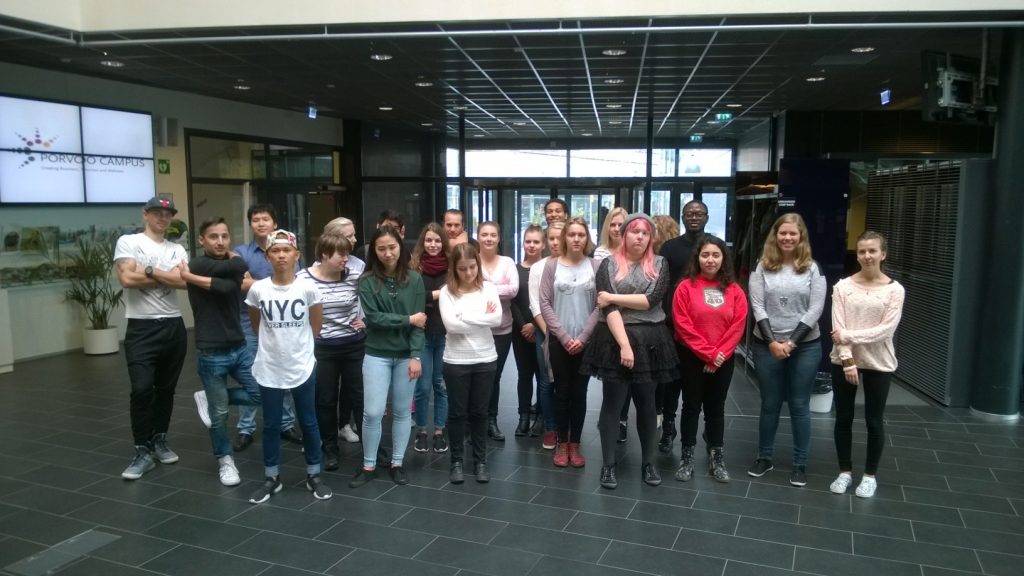Presence is a technique that can be learnt. The Swedish choreographer Helena Franzen calls this “poetry of the articulate body” – a controlled body being completely present in time and space.
This autumn the timing for my Beam Me Up for Presence could not have been better for the TOBBA16 group of international tourism students in their first semester. Apparently, they had already witnessed some poorly performed presentations and they were just about to give an important presentation on their semester projects. Thus I caught the students at a very attentive moment for introducing my recently developed equation 2B+C = poor presence. In sum, don’t stand like a body guard with hands clasped in front of you, nor stand like a butler with arms locked behind your back – butlers are supposed to be invisible when they are not serving tea. Finally, don’t ever use your body as crutch (any form of clutching your body in awkward manner).
In this picture you see charming TOBBA16 students demonstrating the 2B+C-poor presence model in the Porvoo Campus lobby. Notably, posture suffers from clutching the body.
How do you then achieve full presence? The mental trick is to imagine the perfect snapshot of yourself even before you start speaking. The same applies to the ending on the performance: don’t rush off the stage even if you felt uncomfortable. Gradually, after lots of practice, you might find yourself even loving the stage so much that you don’t want to walk off. Additionally, always make sure that you have enough space around you into all directions – this gives your performance volume.
Finally, presence can be as simple as in the picture with TOBBA16 demonstrating strong presence in the perfect snapshot of themselves.
Needless to say, that it is of paramount importance to catch the students at the beginning of their studies by offering them access to performance skills workshops. I’ve heard many older students complain about the number of low-quality presentations they have to listen to during their studies. Sadly, even if students often put a lot of effort into the content, the delivery is impaired by poor posture, wrong placement and inadequate staging. All these easily avoided if having the opportunity to take a hands-on performance skills workshop upon entering the studies.
This academic year I am dividing by teaching between Pasila and Porvoo Campus. In Pasila I’m working with third and fifth semester students in the Finnish Sales Programme. These students are very open to adopting my advice for improved performance: You don’t sell unless you are fully present. I have the privilege of meeting the Pasila groups over a longer period of time, which makes it possible to go into further detail in mastering the stage as well as more intimate negotiation situations. As teacher, it is very rewarding to witness the development in students from week to week. After all, they understand that good presentations skills will make all the difference in future business situations.
Meanwhile, the new Campus 2.0 curriculum is under development in Porvoo and it is time to consider key competencies together with the practical implementation of these. Hopefully, the learning camps will include a solid package of presentations skills workshops as well. After all, it takes two years for the body to unlearn bad habits, so one can never start too early with this type of training. Too often we forget that presence and presentations skills have to do with good technique, thus these workshops might accidentally be excluded from the curriculum, while this should be regarded as important as for instance ICT skills. Yet, we can all tell a good performance from a bad one. So why not start from a simple piece of advice: “Don’t use your body as crutch” as demonstrated by the Degas ballerina below?



